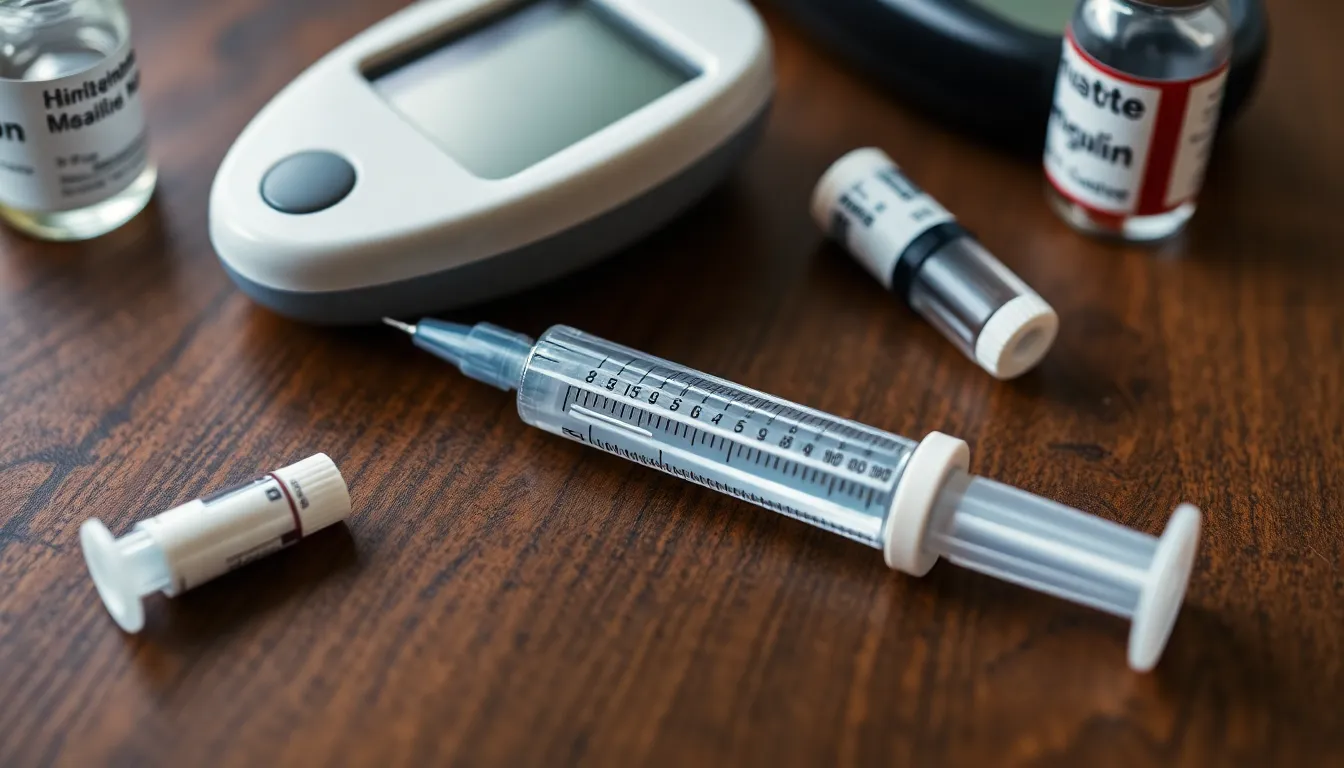Table of Contents
ToggleIn a world where avocado toast can cost more than a small car, insulin prices have become the new punchline in the healthcare comedy show. For those managing diabetes, the soaring cost of this life-sustaining medication feels less like a joke and more like a cruel twist of fate. As the price tags keep climbing, many are left wondering if they need to take out a second mortgage just to afford their next refill.
Overview of Insulin Pricing Trends
Insulin prices have surged dramatically in recent years, raising significant concerns for people with diabetes. From 2014 to 2021, prices increased by over 50%, according to a report from the Health Care Cost Institute. Many individuals find themselves struggling to cope with these rising costs, making it difficult to access this life-saving medication.
Pharmaceutical companies have faced criticism for pricing strategies and lack of transparency. Insulin production often involves high demand and complex supply chains, which can influence prices. Consequently, the financial burden faced by patients continues to escalate, leading to tough decisions regarding their health.
In some cases, insulin costs can account for a substantial portion of a person’s healthcare expenses. Estimates suggest that individuals might spend upwards of $6,000 annually on insulin, depending on their specific needs. Patients often express frustration over being forced to choose between essential medications and other everyday expenses.
Several states have taken legislative action to address insulin pricing. Lawmakers are working to cap costs and improve access to affordable options. These initiatives aim to alleviate the financial strain faced by those reliant on insulin for their health and well-being.
Advocacy groups play a crucial role in promoting awareness around insulin pricing issues. Many organizations work tirelessly to support patients and push for sustainable solutions. As discussions continue, the community awaits meaningful changes that could lessen the impact of rising insulin prices on lives.
Historical Context of Insulin Prices

Insulin has seen dramatic price changes over the years, with significant implications for those managing diabetes.
The Evolution of Insulin Costs
The cost of insulin began rising sharply around 2010, influenced by various factors. Reports indicate that prices increased over 50% from 2014 to 2021. Many patients felt the impact as they faced soaring out-of-pocket expenses. The introduction of newer insulins and branded formulations contributed to higher prices, leaving individuals struggling to keep up. Compounded by production and distribution costs, access to affordable insulin has remained a persistent challenge.
Economic Factors Influencing Prices
Market dynamics play a crucial role in shaping insulin prices. Pharmaceutical companies often set prices based on research and development costs, but transparency lacks in this process. Competition among brands affects pricing strategies, yet many patients witness little change in affordability. Reimbursement policies and insurance coverage further complicate accessibility. Additionally, advocacy efforts call for legislative changes aimed at capping insulin costs, reflecting the pressing need for reform in a fragmented healthcare system.
Recent Changes in Insulin Pricing
Insulin prices have experienced significant fluctuations in recent years. A surge of over 50% in costs from 2014 to 2021 illustrates the growing financial strain on individuals managing diabetes.
Factors Behind Price Increases
Multiple factors contribute to rising insulin prices. Market dynamics often play a role, with limited competition among manufacturers. The introduction of new, branded formulations since 2010 increased expenses for patients while offering minimally improved benefits. Supply chain issues, combined with high research and development costs, also elevate prices. Transparency in pricing structures remains elusive, complicating the issue further. These factors intertwine, creating an environment in which affordability continues to diminish.
Impact of Legislation on Insulin Costs
Legislative efforts across several states aim to address the insulin pricing crisis. Caps on insulin costs emerged as a popular solution to improve access. Such measures potentially lower out-of-pocket expenses for many patients. Advocacy groups have pushed for these changes, raising awareness on a national level. Policymakers often face challenges in balancing pharmaceutical interests with patient needs. As discussions progress, the hope for a more sustainable approach to insulin pricing grows among communities affected by rising costs.
Comparison of Insulin Prices Globally
Insulin prices vary significantly worldwide, impacting access for individuals with diabetes. Countries with nationalized healthcare systems typically offer insulin at lower costs compared to those with privatized frameworks.
Variations in Pricing Across Countries
Canada’s average insulin price stands at $35 per vial, while the United States sees prices reach $300 or more. In Germany, insulin costs around $150, showing marked differences based on healthcare policies. Nations like India experience even lower prices, with insulin available for as little as $5 per vial. Price disparities often reflect varying regulatory environments and market competition, highlighting the urgent need for systemic changes globally.
Case Studies of Price Policies
Denmark implements price caps on insulin, allowing patients to save significantly on prescription costs. Australia showcases a subsidized model, ensuring lower out-of-pocket expenses for insulin users. In contrast, the United States lacks comprehensive price regulation, resulting in unsustainable expenses for many. These case studies illustrate the potential impact of policy on ensuring equitable access to essential medications and emphasize possible pathways for reform in the U.S.
The rising prices of insulin have created a critical situation for many individuals managing diabetes. As costs continue to escalate the burden on patients becomes increasingly unsustainable. Legislative efforts to cap prices and improve access are gaining momentum but the path to meaningful change remains complex.
Global comparisons highlight stark disparities in insulin pricing which further emphasize the need for reform in the U.S. The ongoing discussions among policymakers and advocacy groups signal hope for a future where insulin is more affordable. Addressing this issue is essential not just for individual health but for the overall well-being of the community.







